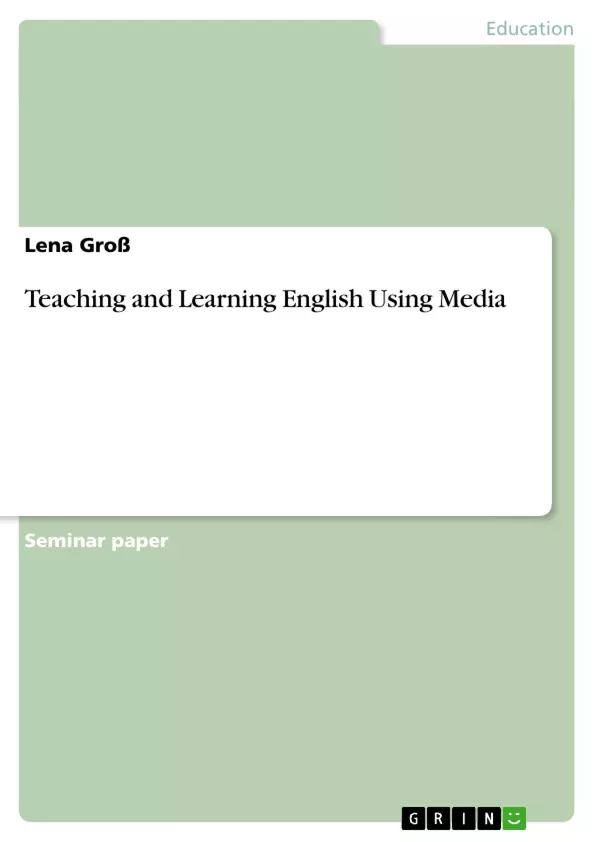Es werden verschiedene Medien (wie Bücher, Computer, Bilder, Filme etc) vorgestellt und erklärt wie sie im Unterricht einsetzbar sind und zugleich deren Vor- und Nachteile aufgelistet.
Inhaltsverzeichnis (Table of Contents)
- The Teacher
- The Course Book
- Pictures
- Music
- Films
- The Computer
- Reflection on What I Have Learned
Zielsetzung und Themenschwerpunkte (Objectives and Key Themes)
This work explores the various ways in which media can be incorporated into the teaching and learning of English as a foreign language. The focus is on providing a practical and comprehensive guide for teachers to enhance their lessons and engage their students in meaningful learning experiences.
- The role of the teacher in the EFL classroom
- The effectiveness and limitations of course books
- The use of pictures as a teaching tool
- The benefits of using music in EFL classes
- Integrating technology and multimedia in EFL instruction
Zusammenfassung der Kapitel (Chapter Summaries)
- The Teacher: This chapter examines the multifaceted role of the teacher in an English as a foreign language (EFL) classroom. It highlights the importance of the teacher as a language model, expert in learning, classroom manager, and researcher. The chapter emphasizes the need for teachers to be fluent in English, to create a supportive learning environment, and to engage students in meaningful activities that enhance their language skills.
- The Course Book: This chapter delves into the use of course books in EFL teaching. It explores the advantages and disadvantages of relying on textbooks, discussing their role in providing structure, standardization, and resources. The chapter also acknowledges the potential for textbooks to be outdated and unresponsive to students' individual needs. It examines different approaches to textbook usage, highlighting the preferences of teachers who rely heavily on textbooks, those who use them as a guide, and those who primarily develop their own materials.
- Pictures: This chapter focuses on the use of pictures as a valuable teaching tool in EFL classrooms. It emphasizes their potential to enhance textbook activities, provide context, and engage students in various language skills. The chapter provides examples of how pictures can be used as lesson starters, stimulate discussions, and promote interaction among learners.
- Music: This chapter examines the benefits of integrating music into EFL lessons. It highlights music's role in developing listening skills, fostering a positive learning environment, and providing opportunities for students to practice language in a fun and engaging way. The chapter explores activities like "Beat the Clock!" where students practice speaking about their musical preferences.
Schlüsselwörter (Keywords)
Key topics and concepts explored in this work include English as a Foreign Language (EFL), language teaching methods, teacher roles, course books, multimedia resources, pictures, music, and classroom interaction. The text aims to provide teachers with practical strategies for incorporating diverse media into their EFL instruction to enhance student engagement and learning outcomes.
- Quote paper
- Lena Groß (Author), 2012, Teaching and Learning English Using Media, Munich, GRIN Verlag, https://www.grin.com/document/269073



